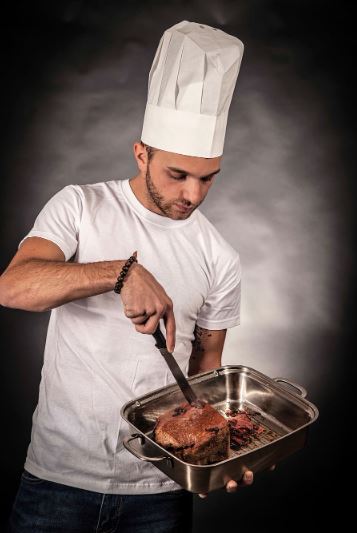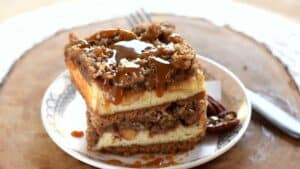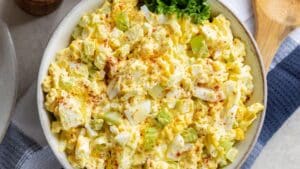Cauliflower has done a wild thing over the last decade it went from being the side dish nobody fought over, to front and center in the kitchens of chefs rethinking tradition. But here’s the kicker: when you fuse it with the indulgent, late-night pull of pepperoni pizza, and wrap it all into a casserole format that bakes like a dream and slices like a memory? That’s when things get interesting.
This ain’t your average “health food spin.” This is a professional’s take on a dish that balances macro-conscious trends with culinary depth.
The Cauliflower Pepperoni Pizza Casserole is not just another keto-friendly gimmick it’s a blueprint for how comfort food can evolve without selling its soul.
Why It’s Time We Took This Casserole Seriously

Let’s talk facts first. According to Dataessential’s 2024 report, cauliflower-based menu items have risen 320% in popularity since 2018.
That’s not a fluke that’s a movement. Diners are actively choosing alternatives to heavy carbs, and they’re expecting flavor to not take a backseat.
Now toss in the evergreen appeal of pepperoni pizza. Pizza itself is a $46 billion market in the U.S. alone. Everyone’s chasing that crispy cheese edge, the tangy sauce, that salty meat hit.
This casserole manages to deliver all of that while offering a fraction of the carbs, more fiber, and a customizable structure that actually works on a line.
The Core: Cauliflower as Your Crust, Not Your Compromise
Here’s what separates good from gimmick technique. If you’re just steaming and mashing cauliflower and hoping it holds up under sauce and cheese, you’re gonna end up with a soggy mess and a lot of returned plates.
The real trick? Roast it first. Get the water out. Let it char in spots. We’re not making mashed potatoes we’re building the base of a casserole that needs to hold its own against bold toppings.
For a half-pan batch (let’s say 6–8 servings), you’ll want:
- 1 large head of cauliflower, riced or finely chopped
- Toss it with olive oil, salt, and a whisper of garlic powder
- Roast at 425°F for 25–30 minutes, flipping halfway. Let it go golden-brown. Let it earn its place in the dish.
Once cooled, mix that roasted cauliflower with a binding agent this is where things can get fancy.
The Binder Wars: Eggs, Cheese, or Something More?
Most recipes will throw in eggs and mozzarella. That’s fine. But for pro-level results, consider adding a small amount of cream cheese and just a spoonful of almond flour.
It creates a slightly more stable, custard-like layer when baked. Keeps its shape when cut. And re-heats like a dream, which is clutch for meal prep or catering.
Ratios matter. Here’s the sweet spot:
- 2 beaten eggs
- ½ cup shredded mozzarella
- ¼ cup cream cheese, softened
- 1 tbsp almond flour
- Salt and pepper, to taste
Mix that in with your roasted cauliflower and press it into a greased pan like you’re building a lasagna foundation. It should feel thick, a little sticky, and slightly cheesy already.
Bake that at 400°F for 15–20 minutes before adding toppings. This pre-bake gives it backbone.
Sauce and Toppings: Where You Win or Lose the Dish
Now let’s get one thing real clear. The sauce cannot be an afterthought. If you’re using store-bought marinara, taste it first. Too sweet? Cut it with crushed red pepper and a bit of balsamic vinegar. Too flat? A splash of Worcestershire and a hit of dried oregano usually wakes it up.
About ¾ to 1 cup of sauce is plenty for one 9×13 pan. Don’t drown it. You’re not making spaghetti.
Now cheese. Mozzarella’s the obvious go-to, but blend in some provolone or fontina if you want more stretch and character. A little sharp white cheddar on the top gives you those browned bubbly pockets people love.
And then: Pepperoni. Go big or go artisanal.
Here’s a little-known pro move fry your pepperoni slices lightly before laying them on the casserole. That extra crisp edge and the rendered fat turn the topping into a flavor bomb.
Add olives, green peppers, mushrooms whatever your clientele digs. But keep it tight. This dish isn’t about volume of toppings, it’s about balance.
Assembly Line to Fine Dining: Where This Dish Fits In

This isn’t just a home-cook hack. I’ve seen high-end bistros in Brooklyn and Denver putting riffs on this dish with house-made lamb pepperoni and roasted heirloom tomato sauce. I’ve also seen hospital kitchens and corporate foodservice lines embracing it for its gluten-free, low-glycemic index profile.
Want it to reheat well? Undercook it slightly on the first bake. Want it to portion clean? Chill, then slice, then reheat in squares. This thing is modular which is rare for casseroles.
Nutrition Profile and Market Demand
Let’s break it down. Compared to a traditional pepperoni pizza slice (about 36g carbs per slice), a serving of this casserole clocks in at under 10g net carbs. You’re getting about 15–20g of protein, and thanks to the cauliflower, a solid 4–6g of fiber.
For keto-focused menus, diabetic patients, or anyone watching glycemic load, this dish delivers without signaling “diet food.” That’s important. No one wants to feel like they’re settling.
According to Mintel’s 2023 food trends report, more than 48% of Gen Z and millennial consumers say they actively seek low-carb alternatives but only if it still feels indulgent. The Cauliflower Pepperoni Pizza Casserole checks that box, and then some.
Common Missteps and How to Avoid ‘Em
- Skipping the roast – You can’t build a good base on soggy cauliflower. Roast it dry, always.
- Overloading with cheese – Yes, it’s tempting. But too much cheese in the base makes it greasy and limp.
- Poor seasoning – Cauliflower needs help. Don’t just rely on the toppings. Salt every layer. Taste as you go.
- Slicing too soon – This casserole needs 10–15 minutes of rest after baking. That’s when it firms up. Slice it hot, and you’ll end up with a cheesy avalanche.
Where It’s Headed: A Case for Customization
We’re starting to see versions of this with everything from buffalo chicken to vegan “pepperoni” made from beets and lentils. If you’re running a plant-forward kitchen, cauliflower gives you a familiar vehicle to get creative.
Swap out the pepperoni for roasted eggplant and add smoked paprika for depth. Use vegan cheese blends that melt clean. Add nutritional yeast to the base for umami. The structure holds it’s just waiting for your twist.
Final Takeaways for Kitchen Pros
This dish is more than a trend. It’s a case study in how low-carb cooking can be bold, structured, and legitimately craveable. It gives chefs flexibility, fits a variety of diets, reheats beautifully, and checks both comfort and nutrition boxes.
If you’re a chef, R&D lead, or menu planner looking to stay relevant without sacrificing quality start here. Take the time to do it right, season it like you mean it, and give cauliflower the respect it’s earned.









